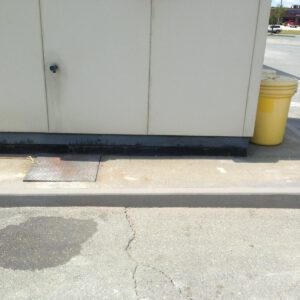If your building or a parking lot has cracks, you may need to consider Concrete Repair. The process may involve several different materials, each with its unique properties and advantages. To select the most appropriate material for the job, you should first determine where the damage occurs. Depending on the type of damage, you may need to perform a visual assessment. In some cases, you may require an engineering firm or professional consultant for a more thorough assessment.

When choosing concrete repair materials, you should also consider the deterioration mechanism. This is vital because if the concrete is not properly prepared, it could result in substandard results. To prevent this problem, the repair material must adhere well to the existing concrete. This can only be achieved with the help of an expert. For example, if the repair material is stone, it needs to break rather than pull out. Moreover, if it is not properly prepared, it can cause a significant difference in the quality of the final product.
After determining the type of damage, the next step is to prepare the area to be repaired. To make sure the repaired area is square and smooth, you need to remove loose edges and crumbling areas. Use a heavy-duty trowel for small areas. A cold chisel can be used for larger areas. It is also important to clean and vacuum the area where the damage is. Hose down the area until it is firm. After that, you can start the repairs.
When choosing a concrete repair company, it is important to remember the factors that contribute to its success. Ensure that the materials you are using are as close to the original mix as possible. When using less water, you can make the mix less watery, which will reduce the shrinkage. Additionally, make sure you consider the size of the aggregates used in the concrete. It is crucial to note that dry-pack concrete is usually more durable than wet-pack concrete and that it requires less force to compaction.
A cement mortar can be used for structural or cosmetic repairs. In the past, cement mortars had a tendency to set up too quickly, too slowly, or too dark. Today, however, you can find cement mortars in three different set times, and three different shades of gray. If you want to be sure that the cement mortar you use will not swell in the rain, choose “carvable” cement mortars. The main benefit of these materials is their ability to repair a wide variety of concrete surfaces.
A repair procedure document helps ensure that the repairs are performed properly. A repair procedure document is a critical element of the NPCA Quality Control Manual. It helps you identify the most effective methods for repair and acts as a history of improvements. However, a poorly written repair procedure document is not as effective as it could be. For this reason, you should always consult an expert before applying concrete repair. The process of repairing a concrete structure is often more complicated than it seems.
When it comes to concrete repair, it’s important to use a mix that can match the original concrete. Most cementitious concrete mixes can be used to repair cracks. However, if you have thin cracks, you’ll need to apply an epoxy or polymer mix. When it comes to specialty repair bag mixes, the number one reason they fail is failure to follow directions. You should always check the directions carefully before applying any new material to your concrete.
During the process of concrete repair, you can also choose between a partial and full-depth method. Full-depth concrete repair involves the removal of damaged concrete and replacement with fresh concrete. Partial-depth concrete repair, on the other hand, involves cutting around the damaged concrete and cleaning the reinforced steel. It’s best to use a full-depth concrete repair method when the original concrete is too deteriorated to use epoxy. However, if the concrete damage is significant, you should consider replacing it.
Using concrete patches to repair cracks is an easy process. The material is easy to use and troweled onto the surface. It’s important to avoid blocking expansion joints as it could result in water runoff and cracking. While a concrete patch may set to a firm consistency in minutes, thicker patches may require several hours to harden completely. You must be aware of the reasons for the crack and determine the best solution. If you’ve opted for this method, it’s essential to ensure a permanent repair.